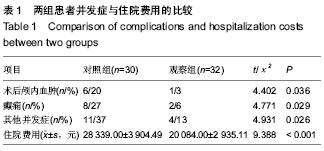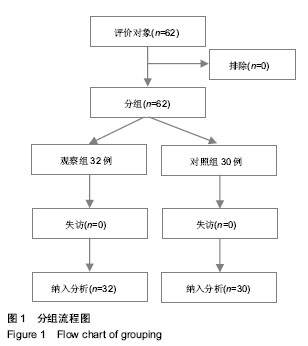| [1] 李侠,张磊,陈燕伟,等.852例开放性颅脑损伤的临床救治经验[J].中华神经医学杂志, 2014,13(5):451-455.
[2] 费舟.重现代颅脑损伤学[M].北京:人民军医出版社,2007:1-50.
[3] 唐协林,姚庆宁,黎乾科,等.不同手术时机颅骨修补对颅骨缺损患者脑血流、脑功能的影响[J].山东医药,2013,53(41):48-50.
[4] 成文平,任瑞明,朱金钊,等.个性化电脑塑型钛网早期修补额颞顶颅骨缺损(附36例报告)[J].中国临床神经外科杂志, 2012,16(12): 742-744.
[5] Goldstein JA,Paliga JT,Bartlett SP.Cranioplasty: indications and advances. Curr Opin Otolaryngol Head Neck Surg. 2013; 21(4):400-409.
[6] Coelho F,Oliveira AM,Paiva WS,et al.Comprehensive cognitive and cerebral hemodynamic evaluation after cranioplasty.Neuropsychiatr Dis Treat. 2014;10:695.
[7] Erdogan E,Düz B,Kocaoglu M,et al.The effect of cranioplasty on cerebral hemodynamics: evaluation with transcranial Doppler sonography.Neurol India.2003; 51(4):479.
[8] 张东强.钛网材料在颅骨损伤修补中的应用[J].中国组织工程研究,2012,16(25): 4735-4744.
[9] 丁勇,钱忠心,叶树铭,等.计算机辅助设计三维钛合金材料在颅骨修补手术的应用[J]. 临床医学工程,2013,20(11): 1327-1329.
[10] Hayward RD.Cranioplasty: don't forget the patient's own bone is cheaper than titanium.Br J Neurosurg.1999;13(5): 490-491.
[11] Mukherjee S,Thakur B,Haq I,et al.Complications of titanium cranioplasty—a retrospective analysis of 174 patients.Acta Neurochir (Wien).2014;156(5):989-998.
[12] 徐将荣,李江.60 年来中国颅骨修补材料的应用[J].中华医史杂志,2011,41(4): 231-234.
[13] 杜建龙,王俭.不同材料在颅骨修补中的临床应用效果比较[J].吉林医学,2012,33(24): 5292.
[14] Doumit GD,Meisler E,Sidaoui J,et al.The Expansile Properties of Kryptonite Relating to Cranioplasty.J Craniofac Surg. 2014; 25(3):880-883.
[15] Shah AM,Jung H,Skirboll S.Materials used in cranioplasty: a history and analysis. Neurosurg Focus.2014;36(4):E19.
[16] Aydin S,Kucukyuruk B,Abuzayed B,et al.Cranioplasty: review of materials and techniques.J Neurosci Rural Pract. 2011; 2(2):162.
[17] 吴平,袁小瓦,吴自成,等.MHIPS和GCS两种评分评估重型颅脑损伤预后的比较[J].江苏医药,2013,39(22):2709-2710.
[18] 周军格,邱勇,岑波,等.数字成型钛网颅骨修补后的皮下积液[J].中国组织工程研究, 2014,18(8):1301-1306.
[19] Harvey HH.Reducing traumatic brain injuries in youth sports: youth sports traumatic brain injury state laws, January 2009–December 2012. Am J Public Health. 2013;103(7): 1249-1254.
[20] Bachynski KE.Scarcity of relevant data on traumatic brain injuries in youth sports.Am J Public Health. 2013;103(12): e1.
[21] 江基尧,朱诚,罗其中,等.现代颅脑损伤学[M].上海:第二军医大学出版社,2004.
[22] 闫伟,吴群,王泽锋,等.27例开放性凹陷性颅骨骨折一期钛网修复体会[A];中华医学会神经外科学分会第九次学术会议论文汇编,2010.
[23] Kuo J,Wang C,Chio C,et al.Neurological improvement after cranioplasty–analysis by transcranial Doppler ultrasonography. J Clin Neurosci.2004;11(5):486-489.
[24] Wiggins A,Austerberry R,Morrison D,et al.Cranioplasty With Custom-Made Titanium Plates-14 Years Experience. Neurosurgery.2013;72(2):248-256.
[25] Song J,Liu M,Mo X,et al.Beneficial impact of early cranioplasty in patients with decompressive craniectomy: evidence from transcranial Doppler ultrasonography. Acta Neurochir (Wien).2014;156(1):193-198.
[26] Rahme R,Weil AG,Sabbagh M,et al.Decompressive craniectomy is not an independent risk factor for communicating hydrocephalus in patients with increased intracranial pressure.Neurosurgery.2010;67(3):675-678.
[27] Jennett B,Miller JD.Infection after depressed fracture of skull: Implications for management of nonmissile injuries.J Neurosurg.1972;36(3):333-339.
[28] 张伯松,翟桂华,张亚莲,等.开放性骨折创面细菌数量判断及其意义的临床研究[J].中华创伤杂志,1998,14(5):314-316.
[29] 朱文武,王学英.钛网与自体碎骨一期修补开放性颅骨粉碎性骨折30例的疗效观察[J]. 广西医学,2013,35(6):808-809.
[30] 齐欣,沈干,王增亮,等.三维钛网在颅骨缺损修复中的应用[J].组织工程与重建外科, 2010,6(4):218-219.
[31] Winkler PA,Stummer W,Linke R,et al.Influence of cranioplasty on postural blood flow regulation, cerebrovascular reserve capacity, and cerebral glucose metabolism.J Neurosurg. 2000;93(1):53-61.
[32] 周志宇,黄冠斌,李光,等.钛网Ⅰ期修补在开放性、粉碎性、凹陷性颅骨骨折术中的应用[J].中国临床神经外科杂志, 2011,16(2): 115-116.
[33] 晋涛.三维可塑形钛网一期修复开放性粉碎性颅骨骨折25例报告[J].中国实用医药,2009,3(35):102.
[34] 彭远强,温宝泉,曾胜田,等.外伤性颅骨缺损修补术后并发症的危险因素分析[J].中国医药导报,2010,7(2):40-41.
[35] 苏坐龙,宋丽娟.颅骨缺损修补术后并发症分析[J].实用医技杂志, 2010,17(8): 758-759.
[36] 谭翱,韦春婵,谢宝君,等.自体颅骨粉一期修复颅骨缺损的临床应用[J].中国修复重建外科杂志,2004,18(1):31-33.
[37] 徐力,王世伟,吴景荣,等.颅骨粉碎凹陷骨折一期整复修补的临床研究[J].齐齐哈尔医学院学报,2006,27(16):1946-1947.
[38] Cabraja M,Klein M,Lehmann T.Long-term results following titanium cranioplasty of large skull defects.Neurosurg Focus. 2009;26(6):E10.
[39] Storper M.The resurgence of regional economies, ten years later the region as a nexus of untraded interdependencies.Eur Urban Reg Stud.1995;2(3):191-221.
[40] 李春昌.为什么实施清创术的最佳时间在伤后6-8小时?[J].中国社区医师,2011, 27(31): M0002 |

